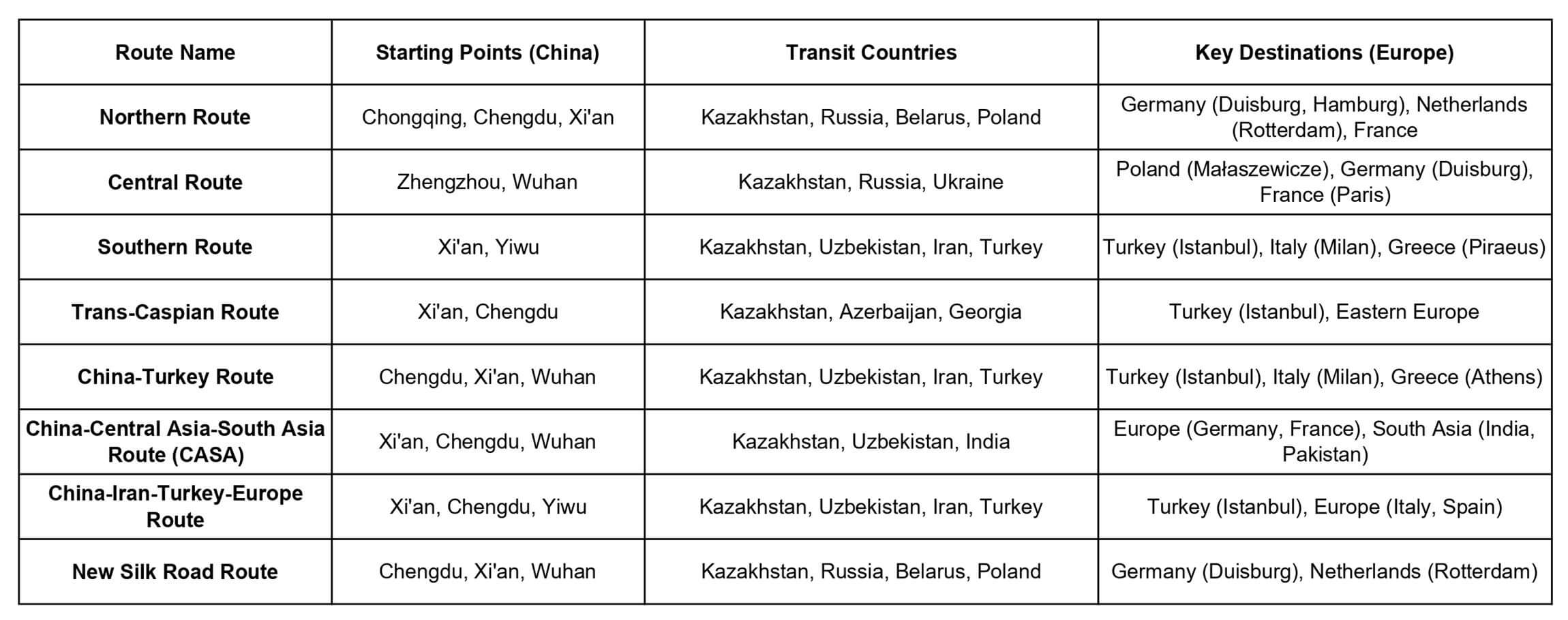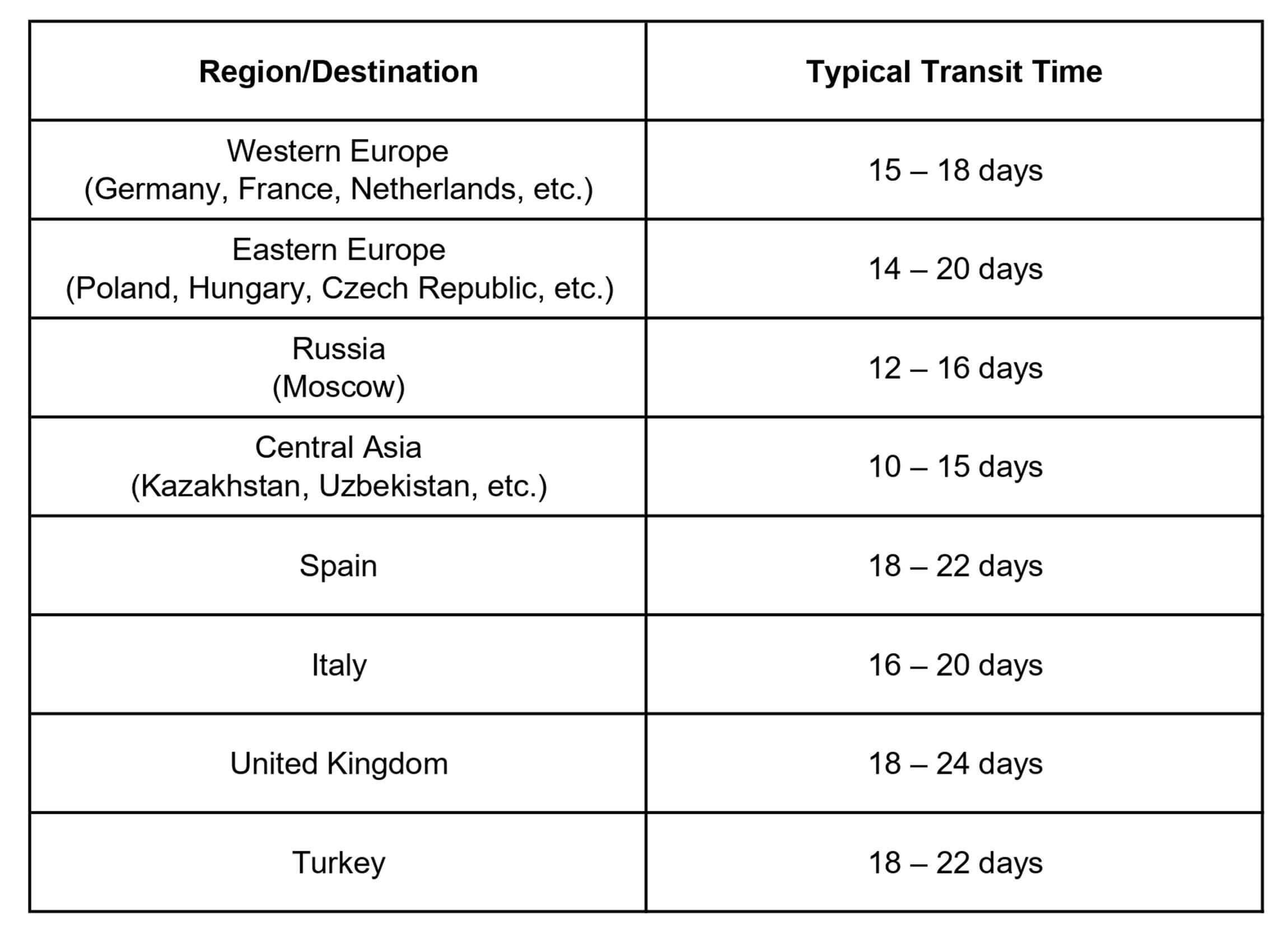Your Strategic Partner for
Unlocking China's Sourcing Potential
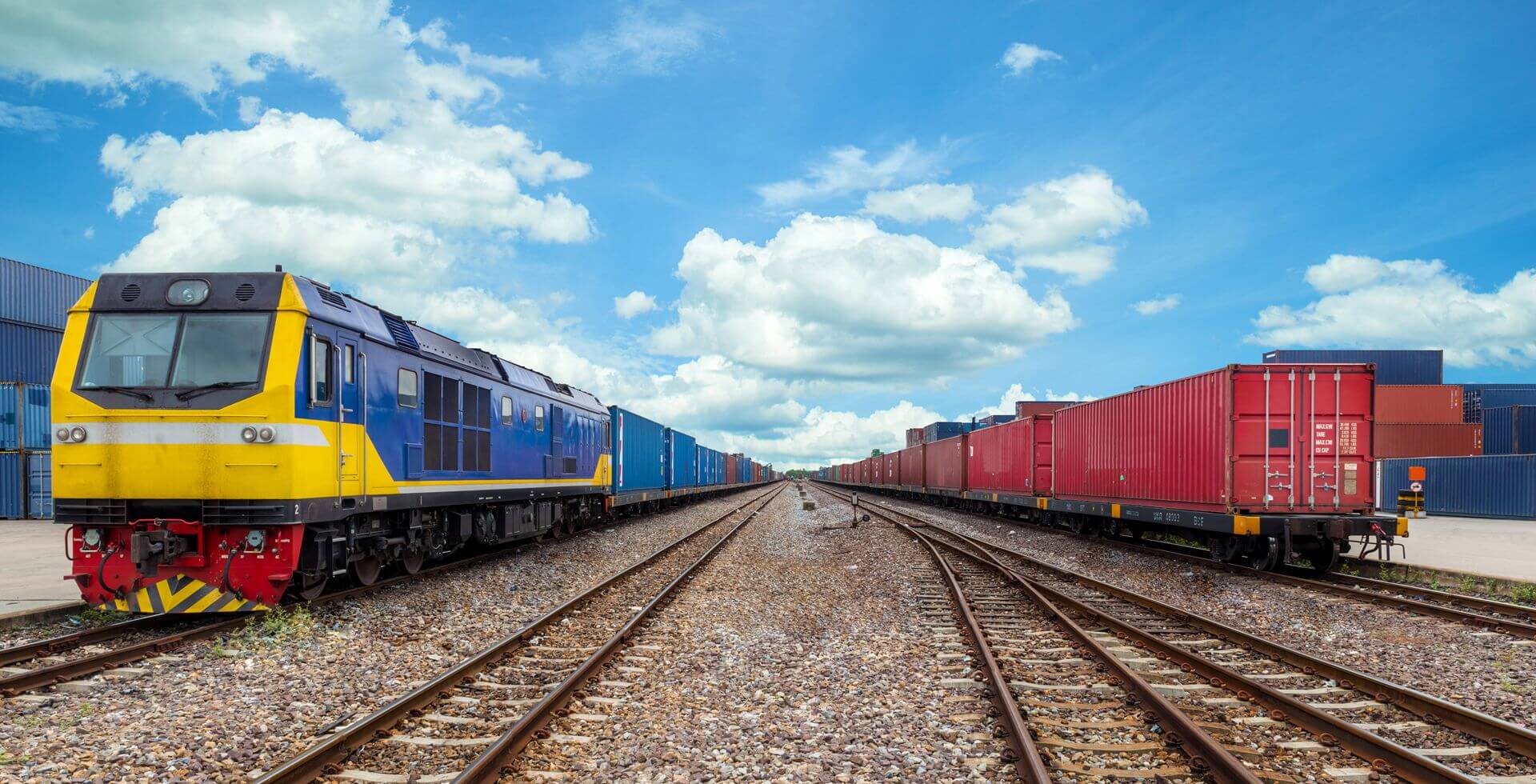
Rail Freight from China
We are dedicated to offering you the best rail freight rates, ensuring that you can optimize your supply chain while staying within your budget. Try it today!
The Perfect Answer for Activating Rail Freight Transport
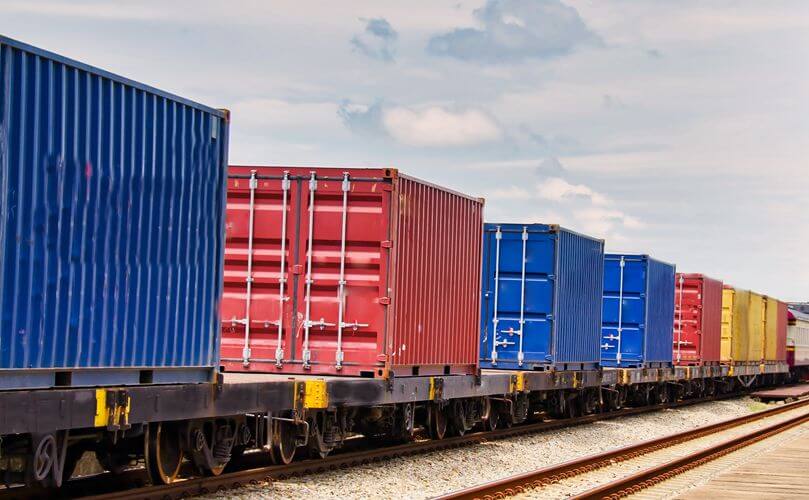
Standard Rail Freight
Suitable for general cargo, combining economy and speed — transit times can be about 20–40 days.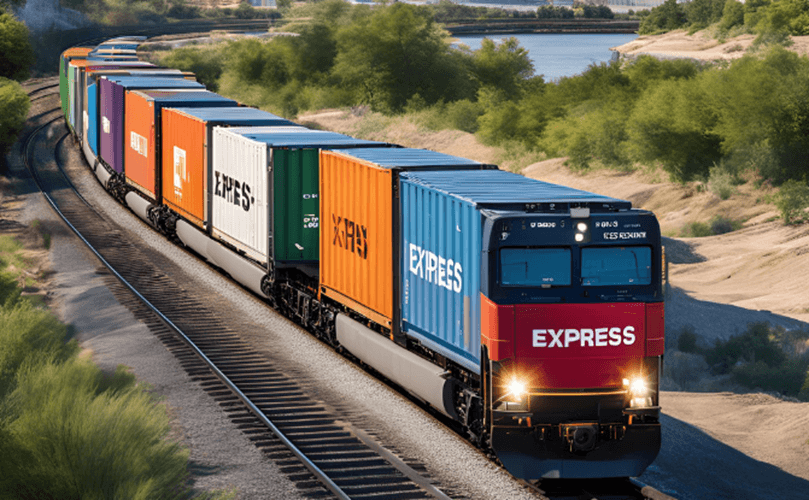
Express Rail Freight
Best for goods needed quick delivery, providing a faster time than sea freight, transit time can be about 10-25 days.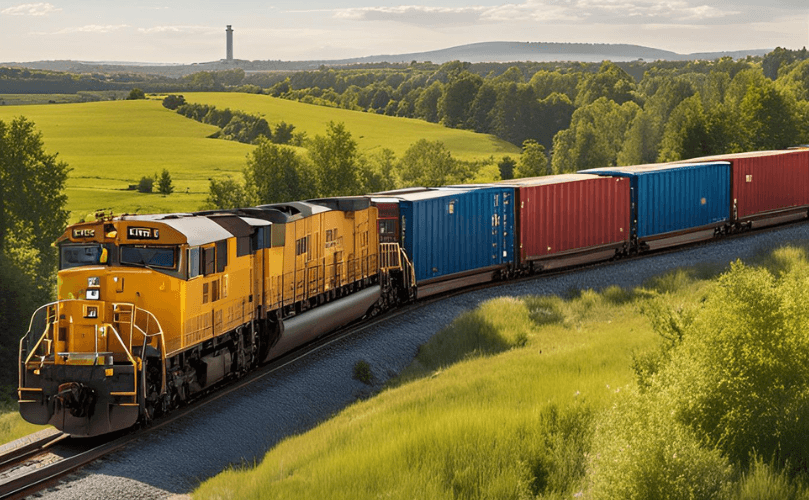
Block Train Rail Freight
Ready for large-scale shipments, it provides dedicated trains for your cargo, ensuring optimal efficiency and security.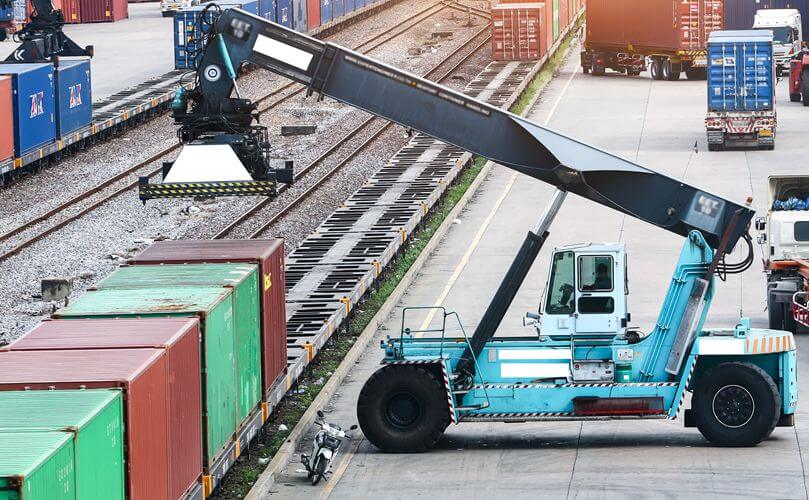
Consolidated Rail Freight
Designed for small and medium businesses, such consolidated shipments save costs without sacrificing reliability.Why choose our rail freight service from China?
Rail freight from China is simple, quick, and cheap. Utilize a truly professional team, reliable rail networks, custom solutions, 24/7 support, competitive rates, priority handling, and end-to-end management. We simplify your supply chain. So you can use and focus on your growth. Get started your growth today!

Comprehensive Service Range
We offer various rail freight services: Standard, Express, Block Train, and Consolidated. Whatever your needs, we've got the right solution.
Expertise in Chinese Market
We know the best routes, local regulations, and customs procedures. No matter what type of product, we've got you covered.
Strong Industry Relationships
We offer you the best rates and ensure your cargo gets priority based on our long-term work relationship with key players in rail freight.
Custom Solutions
Our logistics experts create tailored rail freight solutions to meet the specific goal of your unique business.
Reliable Customer Support
We are always ready to answer your questions, serve you, and keep you posted on the status of your cargo transportation.
Competitive Pricing
We can offer highly competitive rates without compromising service quality as our volume and industry connections.
End-to-End Service
We handle every step of the rail freight process to make a worry-free shipping experience from China to your warehouse.
Compliance and Security
We stay up-to-date with all international rail freight regulations and maintain strict security protocols to safeguard your cargo.
Global Network
We can deliver goods from China to any corner of Europe because of our extensive network.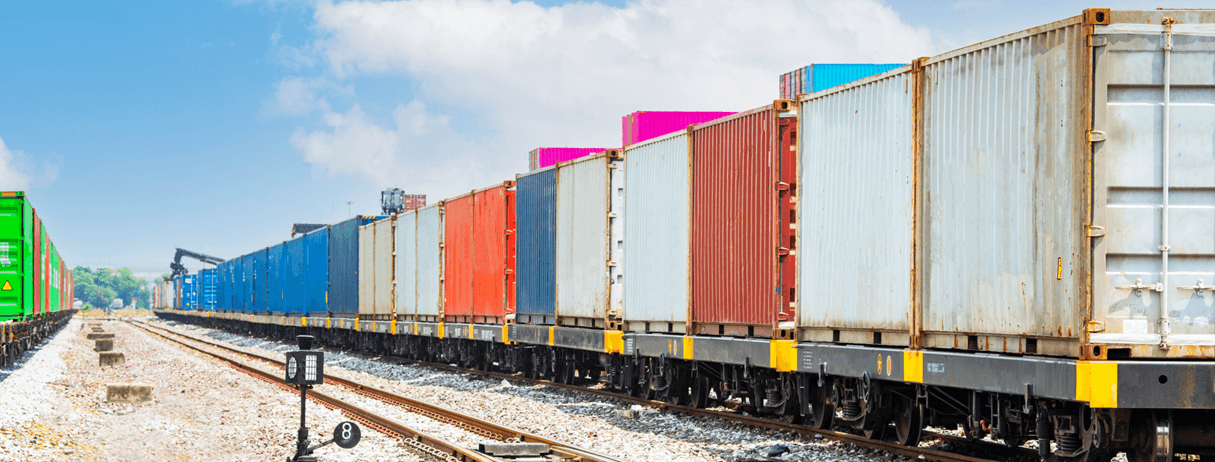
Rail Freight from China Basic
What is rail freight from China?
Rail freight refers to the cargo shipping by train through the railway tracks across the country. China ships products domestically and internationally to the Middle East, the Europe, and Asian countries through the railway tracks.
Rail shipping is only possible when the countries are connected through the railway tracks. Otherwise, the transition to air or sea shipping occurs.
Why is rail freight critical for foreign buyers and importers?
Rail shipping is crucial for foreign buyers and importers. From cost-efficiency to reliability, it features the following benefits.
Excellent speed
Compare the speed of the sea freight with the rail freight. Rail freight comes with a faster speed and seamless shipping. Also, consumers get decent shipping times while saving weeks in shipping. Overall, rail shipping is a better shipping option in terms of speed.
Strict Shipping schedules
Don't think of it like air or sea freight where delays are probable. Instead, rail freight comes with strict shipping timings.
It is less likely the schedules are altered or delivery has some issue during the shipping. Technically, consumers are free of tension for the shipping.
Less impact from the seasonal variations
Cyclones. Rainy seasons. Extreme weather conditions. All such cases don't impact rail shipping very much.
That means you'll avoid shipping delays and enjoy the next-level performance.
Environmental benefits
Forget the environmental toxic impact of rail freight. Unlike air freight, it is less likely to cause carbon footprints.
Therefore, it positively impacts the environment and provides better healthcare.
Inland destination access
Rail freight is the best option for all those destinations where sea shipping fails or isn't possible. Wondering how?
It connects the regions and provides a better speed than sea freight. Plus, it is cheaper compared to air freight.
Comparison with other modes of transport(Air, Sea, Truck)
Comparing the air, sea, and truck with the rail freight can present an excellent view. Let's talk about each mode of transportation.
Speed
Express shipping is the kingmaker of speed. That is possible through air shipping. On the other hand, rail freight comes in second place. While truck freight can be speedy with one-week delivery for shorter distances and longer for distant deliveries. Sea freight is the slowest option for international deliveries up to a month.
Cost
Think for a moment. Which shipping can be the most expensive?
- Air shipping is the most expensive.
- The second is rail freight.
- The third rank goes to truck freight.
- Sea shipping is the least costly.
Environmental Impact
Air shipping has the highest carbon emissions. Therefore, it is not an eco-friendly option. However, sea freight leaves a small amount of footprints. Rail shipping is the eco-friendly shipping solution available to the user. If you are heading to trucking, shorter-distance shipping can be an eco-friendly option. Longer distances produce carbon footprints.
Capacity
Truck has the lowest capacity for shipping and therefore hits the last-mile delivery options. Air shipping is suitable for small to medium parcels while rail freight is suitable for medium to large parcels. On the other hand, the highest capacity for shipping is sea freight. It can ship hundreds of tons of products in various containers.
Reliability
Air shipping is the most reliable option with a strict schedule and less likely delays. Rail freight is also a reliable shipping service. However, you can face issues like port congestion with sea shipping. Trucking is a suitable option for domestic deliveries and also faces fewer impacts from the environmental conditions.
Essential Rail Freight Terminology
General Freight Terms
FCL (Full Container Load).
Full container load refers to the whole container filling with the inventory. It depends if your container is a TEU (Twenty-foot Equivalent Unit) or FEU (Forty-foot Equivalent Unit). Such shipping occurs without any wait as your inventory has filled the container.
LCL (Less than Container Load)
Sometimes products are not enough to fill a 20 or 40-feet container and consume half or less space. It comes under the term of less than container load. Users have to wait until the container is complete and ready for shipping.
TEU (Twenty-foot Equivalent Unit)
There are two key quantities of container— TEU (Twenty-foot Equivalent Unit) and FEU (Forty-foot Equivalent Unit). A TEU has a 20-foot in dimensions and saves the bulk shipping.
FEU (Forty-foot Equivalent Unit)
A FEU has a high container capacity almost double the TEU. Depending on the dimensions, it can fill double or more quantities of the products.
Intermodal transport
Not all shipping systems rely on a single shipping mode. Some companies ship products by air from one location to another and utilize another shipping method, such as trucking for last-mile delivery.
Such a shipping model where more than one shipping method is used is an intermodal transport method.
China-Europe Railway Express Terms
CR Express (China Railway Express)
China Railway Express presents a faster shipping method to the users delivering an excellent delivery speed. It provides products to China cheaper than air shipping and faster than sea shipping.
New Silk Road
The new Silk Road is like the ancient one between China and European countries strengthening their relationship. It helps in the rail freight and eases up the shipping experience.
Belt and Road Initiative (BRI)
It is a global strategy that focuses on trade development. China has been on the front line for the success of this initiative and promotes rail freight across Europe, Asia, and Africa.
Eurasian Land Bridge
Eurasian land bridge is a road that connects Europe with China. It passes through Central Asia and Russia during the connection.
Documentation and Customs Terms
Bill of Lading (B/L)
Bill of lading is a crucial proof of products handed over by the shipping company to the shipper. It details the product type, quantity, and quality of the items. At customs borders, it serves as a necessary tool for the clearance.
Customs clearance
Customs are the authorities that scan the products at the borders. Their role is to filter out the prohibited products and provide proper routing and shipping of the legal products only. Grabbing a clean chit from the Customs agent is customs clearance.
HS Code (Harmonized System Code)
HS code is a specific code system that classifies the products and defines their import duties. It helps speed up customs clearance and grab an instant clearance by paying the necessary prices and terms.
Logistical Terms
First mile/Last mile
First-mile delivery is the departure of the products from the shipper's warehouse. While the last mile delivery refers to the final shipping to the consumers.
Transshipment
Changing the mode of shipping refers to the transshipment. For instance, port-to-port delivery occurs through sea freight. For final delivery, trucks ship products through inland transportation.
Drayage
Drayage is the process of short-distance shipping. It involves transporting products from the rail terminals or ports. It often occurs through truck freight.
Door-to-door service
Shipping products from the supplier's warehouse to the consumer's defined address is the door-to-door delivery service. It doesn't matter what mode of freight has been used in the door-to-door shipping method.
Time and Performance Terms
Transit time
The overall time consumed by the delivery of products after leaving the suppliers' location to the final delivery to consumers is the transit time. You can think of a shipping time.
ETA (Estimated Time of Arrival)
ETA is the estimated time when the products will arrive. Depending on your shipping method and company, ETA can change.
ETD (Estimated Time of Departure)
ETD is the departure time of the products from the warehouse or supplier's location. It is also a rough time that changes based on the conditions, such as shipping requirements, weather, and shipping service you have used.
Cut-off time
It is the threshold time delivery must reach the shipping company's hands to be included in the subsequent scheduled shipments. Depending on the shipping company, time varies from daily to night and vice versa.
Lead time
The time from placing orders to the final mile delivery refers to the lead time. It includes the manufacturing and order processing times of any delivery.
Key Rail Routes from China
China-Europe Railway Express (CR Express)
China-Europe Railway Express is the railway network that works under the initiative of Belt and Road. It passes through various European countries and connects them with China for easier and safer shipping options.
Take a look at this route.
China's Major Cities
It passes through various Chinese regions and connects them with European countries. A typical list is:
- Chongqing
- Chengdu
- Xi'an
- Yiwu
- Zhengzhou
- Wuhan
These cities act as rail hubs for shipping from China to foreign countries.
Transit countries
The incoming countries can be your destination for the shipping. The list of incoming countries includes:
- Central Asian countries (Kazakhstan, Uzbekistan)
- Russia
- Belarus
- Poland
- Germany
- Netherlands
- France
Significant destinations and transit countries
Rail freight from China passes through various countries and is a destination route. The following countries are the destinations of rail freight from China.
- Germany (Duisburg, Hamburg). In Germany, Duisburg is the most crucial location for rail freight. It facilitates shipping and provides accessible shipping routes.
- Poland(Małaszewicze). It is a transshipment route through which most shipments from China pass.
- The Netherlands (Rotterdam, Tilburg). It is a destination route for shipping.
- France (Lyon, Paris). France is a paramount place for shipping. It offers an excellent shipping route.
- Russia (Moscow, Yekaterinburg). Russia acts as an antique location for Chinese shipments.
Emerging routes
Some rail routes are emerging as a crucial point for shipping from China. You can look for the following routes as the emerging ones.
- China-Turkey-Europe Route
- China-Iran-Turkey Route
- China-Central Asia-South Asia (CASA) Routes
- Trans-Caspian Route
How to Choose the Right Rail Route
When choosing rail freight, you must consider all the necessary tips and tricks.
Factors to consider
To make your first attempt at shipping, look into the following factors.
Origin and destination
Not all locations have a direct link between the origin and destination. First, think of your origin location and its proximity to the port. Second, think of the proximity of your destination to the port.
If they are far away from the port, you can amend it. Hire the trucking service or opt for the nearest location for the shipping.
Transit time
How fast do you want your inventory? Technically, rail freight is faster than sea freight but slower than air shipping. Usually, it takes 12-20 days for the rail freight for international shipping.
As a genius, you can select the nearest route for the shipping. Furthermore, optimize the customs process and enjoy faster shipping than usual.
Cost
Generally, you have access to air shipping apart from the other methods. If you don't need products quickly, choose the correct shipping method, such as rail freight.
Now, consider how much your container can be filled. LCL price is more expensive per unit than the FCL. But you only have to consider the FCL when you can fill the whole container. Compare the LCL and FCL costs and choose a suitable shipping method.
Cargo type
Define what types of products you are shipping. Fragile items require special handling. Similarly, petrol or other dangerous products need specialized containers for shipping.
As a user, you must consider all the shipping options for your cargo shipping. When hiring rail freight, ask yourself.
- Is it a suitable option for your shipping?
- Does it offer special handling?
- Can you safely ship using the given shipping option?
Customs documentation
Trade agreements are the decisive factors for customs clearance. Before you choose the shipping, read through the trade agreements. You can get instant clearance if they are intact and promote the trading.
Before jumping into international trade, keep your documents handy. Attach the right HS code to your products. Finally, grab all the documents necessary for the clearance.
Tips for optimizing your route selection
Route selection is the easiest task if you know how to opt for the right products and shipping method. The quick outlook of all the steps is here.
- Shipping routes available. Check all the shipping routes and their total distance. Select the one that is proximal to your destination location.
- Don't forget the pricing. Fuel pricing to other charges, all impact the overall shipping. Try to make way with the most affordable shipping options.
- Intermodal transport solutions. Some routes don't reach your destination. So, is there any solution to get such addresses? You can try the intermodal transport solutions. For example, air shipping can be used with rail freight for the final delivery.
- Consider advanced technology. Advanced technology can get you instant tracking facilities and safer shipping. Deploy the latest tools and optimize your shipping with advanced tech.
How to Get Started with Rail Freight from China
1) Assessing Your Needs
Assessment of the accurate needs can streamline the freight selection. You have to consider all the shipping options and relevant aspects.
Evaluating your shipping volume and frequency
First of all, consider the shipping volumes and frequencies. Consistent orders with large shipping volumes urge the shipping companies. They open doors to more flexible payments and provide discounts.
Determining the time-sensitivity of your shipments
Some goods need urgent shipments. Others might not have a specific time. Differentiate your goods based on time sensitivity. Rail freight usually offers a decent speed yet you have to think of the timeframes with the strict shipping deadlines..
Considering the nature of your goods (size, weight, value, fragility)
What types of products are you shipping? Fragile and dangerous items require additional care. They often come with additional costs for handling. Weight and size calculations can define the overall costs of your shipping freight. So, consider all the shipping aspects including their nature.
2) Researching and Selecting Routes
Research and selection of the route matter a lot. Some roads are bustling and can delay your shipments. Some routes are more proximal to your location. You have to think of all the aspects related to your shipping routes.
Identifying optimal departure and arrival stations
You have to consider the route proximity and relevant factors. Some routes offer a better shipping structure. The loading and unloading is effortless. The rush is less. You must opt for such routes that can speed up the overall shipping process. Avoid routes that are more about hassled shipping.
Comparing transit times and costs of different routes
The simple tactic is to compare the transit times and costs. The busy routes often come with complex pricing. Moreover, they take more time to process and deliver inventory. The preferable choice is to avoid a priority.
Choose the routes that offer decent transit times.
Considering the geopolitical stability of transit countries
Anything can happen if you are routing your shipping through an unstable country. For example, your shipping gets stranded in the country. It might come through various accidents occurring in the locale. Geopolitical issues can also delay shipping.
3) Choosing a Freight Forwarder or Logistics Partner
Choosing a reliable shipping partner can bring all the blessings. First of all, your shipping is guaranteed to be safer. Moreover, shipping hassles are less.
Criteria for selecting a reliable partner
Opting for a reliable partner is the most hectic task ever. But make a criterion for the selection. For example, hunt down experienced members with an extensive shipping network. Check out their services and performances in shipping and enjoy a flawless shipping opportunity with reliable shipping services.
Questions to ask potential partners
There is a complete list of questions to ask from your partners. Include every vital question when asking your shipping service.
The list of questions is:
- What services do you offer?
- What are your shipping methods available?
- How much is the shipping cost for the specific shipping method?
- Do you provide multiple routes through rail shipping?
All these options will get you closer to the most suitable shipping service.
Importance of local representation in China and destination country
China is a giant country with an extended manufacturing sector. The developed system can confuse you. Language barriers can put you behind bars.
Having a local representative agent can relieve your hassles with the language and shipping. Having customs clearance is also an effortless task.
4) Understanding and Preparing Documentation
One of the most troublesome jobs in international shipping is customs clearance. Users have to go through hectic documentation.
Overview of required documents
When exporting or importing products, each border requires detailed verification. Either it can be inspection or documentation.
You must have the following documents.
- Bill of lading
- Commercial invoice.
- Certificate of origin
- Insurance
- Licenses or certificates related to your products
Grabbing all these documents can save you from customs clearance.
Tips for accurate and compliant documentation
Apply straightforward tactics.
- Learn about the necessary documents.
- Collect all the documents from the suppliers and shipping companies.
- Verify them with the authorities.
- Keep them handy.
Submit all the documents when you are 100% sure of their authenticity.
Using digital tools for document management
Keep your online tools ready to place your record. Prepare the record and then manage all your documents. Enjoy a flawless clearance.
5) Packaging and Labeling Your Goods
Packaging and labeling of the products must be your as per the standards. Rail shipping is different from the air. So, packaging rules are quite different.
Guidelines for rail-appropriate packaging
Rail freight has more exposure to ineffective weather conditions. Moreover, it needs robust material shipping instead of fragile ones. The first activity is to monitor the packaging and make it more robust. Go for wooden crates or other materials that best fit the shipping choices.
Labeling requirements and best practices
Labels must be waterproof to be intact. Make sure you fasten with powerful glue or excellent tapes for the integrity of your packaging. The information must be complete and precise.
Considerations for climate changes during transit
Climate change can impact the overall conditions. Therefore, go for the waterproofing and weatherproofing of your packaging. Electronics and perishable products must have separate packaging that must be secure and easy to assemble.
6) Navigating Customs and Regulations
The customs process can be complex for a beginner. But don't worry; we have sorted it out in a simple structure.
Pre-shipment compliance checks
Before you ship products, take a look at your products. Eliminate the prohibited products. Assess the dangerous items. Remove low-quality ones.
Working with customs brokers
Customs brokers can relieve all your hassles. All you have to do is to contact them. They will help you arrange all the documents. Comply with customs rules. The result will be instant customs clearance.
Understanding and preparing for inspections
Customs inspect the products through X-RAY examination and manual inspections. Prepare your products for the inspection.
7) Arranging Insurance
Insurance can be your savior in case of mishaps. All you have to do is to explore the right insurance company.
Types of insurance policies available
There are often two types of insurance policies. One covers all the risks associated with your freight. Another covers only the specific and basic demands. Understand both kinds of insurance policies.
Assessing your insurance needs
What type of products are you shipping? Fragile and precious items often require all-risk insurance. So, go for it. For average-value products, you can opt for basic insurance plans.
Tips for cost-effective coverage
Always go through all the aspects of insurance. Follow the tips:
- Choose the most suitable insurance options. For instance, precious items require all-risk coverage.
- Check the additional costs to avoid surprises.
- Enjoy the reduced pricing by getting quotes from multiple insurance companies.
- Confirm what insurance policy covers in your plan.
8) Tracking
Tracking is a crucial component, as consumers want to know the tracking status. The options you have:.
- Built-in tracking Try the internal trackers available on the official shipping company websites.
- External trackers. Grab your tracking ID from the order and track the orders from Order Tracker or ParcelApp.
9) Planning for Last-Mile Delivery
Now is the time for the final delivery to the consumer's doorstep. Let's make this clearer.
Coordinating with local transport providers
Dig up the local service providers. Assess their capabilities. Consider experience and think about the shipping options.
Understanding options for final destination delivery
Choose the various local delivery options. Also, multiple companies offer shipping services domestically. Based on your needs, you can choose from shipping options. Coordinate with service providers to truck to your doorstep.
Preparing for potential challenges at the destination
Fight with the potential delivery and reception challenges. Be on the time of reception. Sign the delivery and unbox your products to check the quality and defective items.
How much does it cost to ship from China by railway?
Rail freight costs depend on various factors such as:
- Destination country You can get higher quotes if the destination country is miles away. Similarly, a nearby country causes lower fuel costs and better prices.
- Volume and Weight. If the volume is large with the FCL container, per unit cost is less. Similarly, the increased weight can elevate your costs.
- Types of goods.. Fragile and high-value goods require additional care. It comes with the increased costs.
- Customs duties. They vary depending on the origin and destination countries.
Shipping to Europe
Shipping to European countries offers the most expensive shipping structure.
- FCL costs an average price of $7,000 to $10,000 for shipping to the European countries.
- An LCL cost is $100 and $150 per cubic meter, while the overall weight of the overall shipping is $0.50 to $0.80 per kilogram.
Shipping to Russia
- FCL costs $5,000 to $8,000 per container
- LCL price is $80 to $120 per cubic meter. Meanwhile, the $0.40 to $0.60 is the per kilogram price of the weight.
Shipping to Central Asia
- FCL If you are shipping to Kazakhstan and Uzbekistan, the container cost is $4000-$6000.
- LCL cost ranges from $80 to $100 per cubic meter. On the other hand, the weight price is $0.35 to $0.55 per kilogram.
Shipping to Eastern Europe
Eastern Europe includes various countries such as Poland, Hungary, and the Czech Republic. The LCL price varies from the FCL.
- FCL (Full Container Load) costs can range from $6000 to $9000.
- LCL (Less than Container Load) costs $90 to $130 per cubic meter. If you want to ship by weight, it is $0.45 to $0.75 per kilogram.

The transit time of railway shipping from China
Transit time for shipping varies depending on the route.
Northern Route (through Russia)
The shipping occurs to Russia and Northern Europe. The time taken is almost 12-20 days for most of the countries on this route.
Central Route (through Kazakhstan, Russia, and Belarus)
It connects China with Germany, France, and Western Europe. The shipping time is 15-18 days.
Southern Route (through Kazakhstan, Turkey, and Eastern Europe)
The time frame is higher than in other areas. It takes almost 18-24 days to ship products to Southern Europe.
Packaging and Loading Requirements
Follow the packaging terms and make it more safe. Even think about the key methods to make packaging more efficient for your products.
Proper packaging for rail transport
Go for the high-end packaging with high density. Consider:
- Packaging must be moisture-resistant.
- It must have multiple layers for safety.
- Packaging must be sturdy and safe for stacking items.
Container types and sizes
Various types of containers are currently the components of rail freight. Take a look.
- 20-foot containers have a dimension of 20 feet and can handle thousands of kilograms.
- 40-feet containers are double of 20-feet ones and offer shipping for bulkier items.
- Open-top containers Some containers have an open top and are used for oversized cargo.
- Reefers These containers are suitable for temperature-sensitive products.
Loading regulations and best practices
Always follow the best practices to avoid accidents during storage and shipping. Here are a few tips.
- Consider the equal weight distribution across the container.
- Use airbags to elevate the safety of the products.
- Secure the container with the robust straps and enjoy the next-level shipping support.
- Fasten the safe and waterproof labels to the containers.
Documentation and Customs Procedures
Required documents for rail freight
Customs documents are the same for rail freight. The list includes:
- Bill of lading
- Commercial invoice
- Packing list
- Certificate of origin
- Licenses
- Customs Declaration
Customs clearance process
Think of the customs process as a sketch.
- Pre-clearance. Consumers have to submit the documents necessary for clearance.
- Inspection. The Customs team checks the products and assesses their authenticity. It also confirms the license authentication.
- Duty and tax payments. Pay the customs duties for the clearance.
Tips for smooth customs procedures
The customs process can be complicated for beginners. But make it straightforward by adopting the following points.
- Accurate documentation. Pick all the documents and verify them before submission.
- Get help from a customs broker. Use customs brokers to speed up the clearance process.
- Deploy digital tools. Nowadays, online tools have reduced error probability. You can try them for faster clearance.
Insurance and Liability
Incoterms
Incoterms vary from one country to another with the respective rules. We have added the key incoterms for the rail freight.
- In free onboard shipping, the supplier is responsible for the damage or loss until the products get loaded on the rail freight.
- Suppliers take responsibility for cost, insurance, and freight until the products reach the destination port.
- DDP. In the delivery duty paid terms, the seller is responsible for paying the customs duties and taxes implemented on the shipment.
Assess your insurance requirements.
Before you opt for the right insurance, consider:
- Product types
- Overall values of the products
- Fragility and sensitivity of the items.
- Shipping methods available
These factors can help you choose an accurate shipping option, such as all-risk insurance for highly sensitive items.
Understanding liability limits and coverage
Limited coverage is often associated with rail carriers. Technically, consumers have to opt for additional insurance services for complete insurance coverage. Therefore, consider the overall rule assimilation for the shipping. Don't hesitate to jump into your products if extra insurance is needed for your products.
Challenges and How to Overcome Them
Common issues in rail freight from China
- Delays due to border crossings. Some borders require extensive inspection and relevant services depending on the relationships with China. It leads to delayed shipping and imminent problems.
- Weather issues. Extreme weather, such as fog and other disasters, can result in delayed delivery. It is an extreme issue for the consumers.
- Geopolitical factors. Consumers can consider the delays if there is political instability in the country.
Strategies to mitigate risks and delays
- Documents preparation. Prepare your documents on time. Think of all the necessary tools required. Keep them ready.
- Real-time tracking. Get the instant tracking facilities. Check the possible delays while tracking your products.
- Diversification of routes. If one route is busy, another one may not be. Consider all the alternative routes for shipping.
- Use off-peak hours. Reschedule the shipments to off-peak seasons. You'll not only avoid the delays but also get reduced quotes.
Why should you use the JustChinait railway shipping service?
JustChinaIt is the home to the consumers because it features:
- Source products
- Warehouse
- Consolidate
- Ship them to your destination location.
Consumers can save the price and enjoy the next-level railway shipping services. JustChinaIt also provides timely shipping facilities for doorstep shipping. Get affordable prices and minimize your costs right away!
Your China Import Success Story Starts Here. Find How We Can Help You Drive More Profit.
Ready to speak with an importing expert?
Please give us a call or e-mail.
+86-150-1926-7452
156+ Serving Countries Around the World
50+ China Sourcing and Shipping Masters On Staff
300+ Carrier and Forwarders Cooperating per Month
1,000+ Verified Manufacturers, Wholesalers, and Traders Dealing per Month

